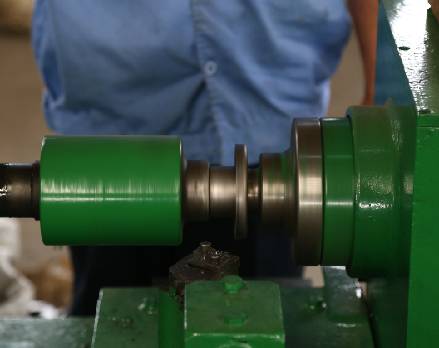 Afrikaans
Afrikaans  Albanian
Albanian  Amharic
Amharic  Arabic
Arabic  Armenian
Armenian  Azerbaijani
Azerbaijani  Basque
Basque  Belarusian
Belarusian  Bengali
Bengali  Bosnian
Bosnian  Bulgarian
Bulgarian  Catalan
Catalan  Cebuano
Cebuano  Corsican
Corsican  Croatian
Croatian  Czech
Czech  Danish
Danish  Dutch
Dutch  English
English  Esperanto
Esperanto  Estonian
Estonian  Finnish
Finnish  French
French  Frisian
Frisian  Galician
Galician  Georgian
Georgian  German
German  Greek
Greek  Gujarati
Gujarati  Haitian Creole
Haitian Creole  hausa
hausa  hawaiian
hawaiian  Hebrew
Hebrew  Hindi
Hindi  Miao
Miao  Hungarian
Hungarian  Icelandic
Icelandic  igbo
igbo  Indonesian
Indonesian  irish
irish  Italian
Italian  Japanese
Japanese  Javanese
Javanese  Kannada
Kannada  kazakh
kazakh  Khmer
Khmer  Rwandese
Rwandese  Korean
Korean  Kurdish
Kurdish  Kyrgyz
Kyrgyz  Lao
Lao  Latin
Latin  Latvian
Latvian  Lithuanian
Lithuanian  Luxembourgish
Luxembourgish  Macedonian
Macedonian  Malgashi
Malgashi  Malay
Malay  Malayalam
Malayalam  Maltese
Maltese  Maori
Maori  Marathi
Marathi  Mongolian
Mongolian  Myanmar
Myanmar  Nepali
Nepali  Norwegian
Norwegian  Norwegian
Norwegian  Occitan
Occitan  Pashto
Pashto  Persian
Persian  Polish
Polish  Portuguese
Portuguese  Punjabi
Punjabi  Romanian
Romanian  Russian
Russian  Samoan
Samoan  Scottish Gaelic
Scottish Gaelic  Serbian
Serbian  Sesotho
Sesotho  Shona
Shona  Sindhi
Sindhi  Sinhala
Sinhala  Slovak
Slovak  Slovenian
Slovenian  Somali
Somali  Spanish
Spanish  Sundanese
Sundanese  Swahili
Swahili  Swedish
Swedish  Tagalog
Tagalog  Tajik
Tajik  Tamil
Tamil  Tatar
Tatar  Telugu
Telugu  Thai
Thai  Turkish
Turkish  Turkmen
Turkmen  Ukrainian
Ukrainian  Urdu
Urdu  Uighur
Uighur  Uzbek
Uzbek  Vietnamese
Vietnamese  Welsh
Welsh  Bantu
Bantu  Yiddish
Yiddish  Yoruba
Yoruba  Zulu
Zulu Understanding Various Types of Belt Drive Pulleys for Efficient Power Transmission in Mechanical Systems
Understanding Belt Drive Pulley Types
Belt drive systems have become integral to numerous mechanical applications, from automotive engines to industrial machinery. Central to these systems are pulleys, which transfer energy between shafts via belts. Understanding the different types of belt drive pulleys is essential for effective design and maintenance.
1. Flat Pulley
The flat pulley is one of the simplest types, featuring a flat surface. It is designed to work with flat belts and is commonly used in light-duty applications. These pulleys are easy to manufacture and typically found in appliances where low power transfer is required. However, they may not provide sufficient grip under heavy loads, which could lead to slippage.
2. V-Belt Pulley
V-belt pulleys are designed to accommodate V-belts, which have a trapezoidal cross-section. This design allows for increased surface area contact, providing a more secure grip and reducing slippage. V-belts can handle high-powered applications, making them popular in automotive and industrial settings. V-belt pulleys can be found in two primary configurations sheave pulleys and pulley wheels, each serving different operational needs.
Timing pulleys are specifically designed to work with synchronous belts, which have teeth that fit into corresponding grooves on the pulley. This design ensures precise timing between connected shafts, making timing pulleys essential in applications where synchronization is critical, such as in engines and conveyor systems. Timing belts and pulleys help prevent slipping, ensuring that speed ratios remain constant, which is vital for accurate operational performance.
belt drive pulley types

4. Idler Pulley
Idler pulleys do not drive a load themselves; instead, they are used to guide or maintain tension on the belt system. They can be flat, V-shaped, or have teeth, depending on the specific requirements of the application. By maintaining proper tension, idler pulleys help extend the lifespan of belts and pulleys, prevent slippage, and reduce wear and tear.
5. Belt Drive Sprocket
While technically not a pulley, belt drive sprockets often work in conjunction with chain drives. Sprockets feature teeth that fit into the links of a chain, providing a mechanical advantage in transmitting power. They are commonly used in bicycles and motorcycles, where precise power transmission is necessary.
6. Variable Speed Pulley
Variable speed pulleys enable users to adjust the speed of the driven shaft by changing the diameter of the pulley in contact with the belt. This adaptability is crucial in applications requiring variable speeds, such as mills, lathes, and other machines that require different operational speeds for different tasks. These pulleys often use a combination of fixed and movable sheaves to alter the belt's position and, consequently, the effective diameter.
Conclusion
In conclusion, the choice of belt drive pulley plays a critical role in the efficiency and effectiveness of mechanical systems. By understanding the different types of pulleys—flat, V-belt, timing, idler, sprockets, and variable speed—you can make informed decisions in designing or maintaining belt drive systems. Each type has its unique characteristics, benefits, and applications, making it imperative to select the right one for your specific needs. By carefully considering these factors, you can optimize your mechanical systems for enhanced performance and longevity.
-
Revolutionizing Conveyor Reliability with Advanced Rubber Lagging PulleysNewsJul.22,2025
-
Powering Precision and Durability with Expert Manufacturers of Conveyor ComponentsNewsJul.22,2025
-
Optimizing Conveyor Systems with Advanced Conveyor AccessoriesNewsJul.22,2025
-
Maximize Conveyor Efficiency with Quality Conveyor Idler PulleysNewsJul.22,2025
-
Future-Proof Your Conveyor System with High-Performance Polyurethane RollerNewsJul.22,2025
-
Driving Efficiency Forward with Quality Idlers and RollersNewsJul.22,2025





























